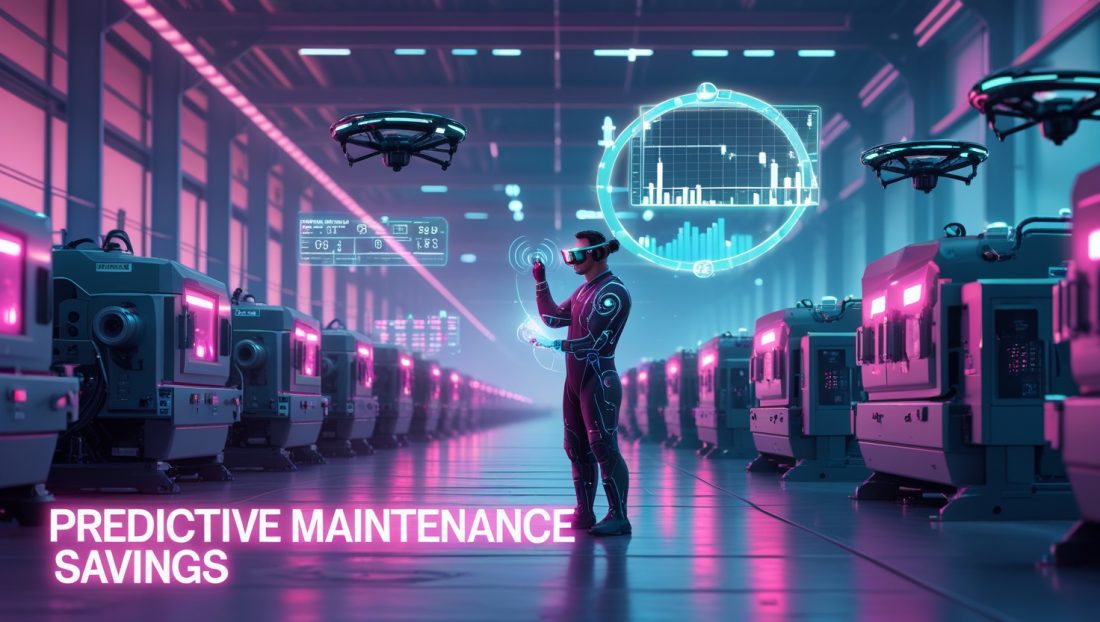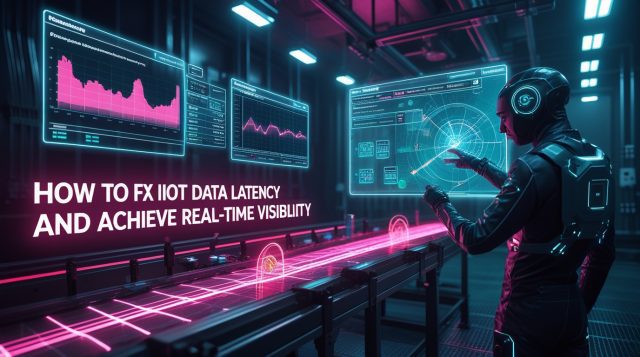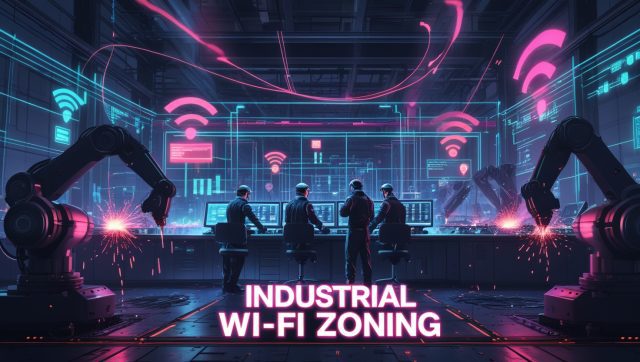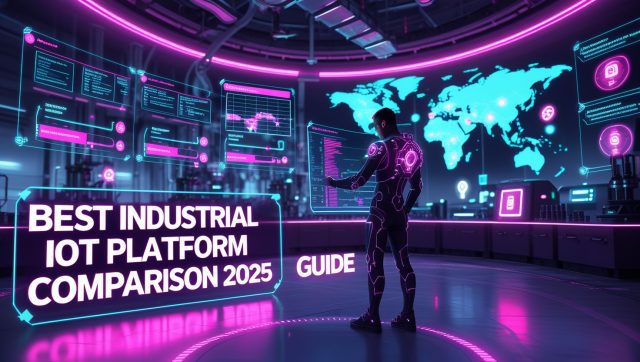The $260,000-Per-Hour Problem
What if three sensors could prevent a six-figure manufacturing disaster? At Bosch’s hydraulic component plant in Homburg, Germany, this became reality. In 2024, a single bearing failure halted production for 5 hours, costing €85,000 ($92,000) in lost output, overtime, and penalties. This incident ignited Bosch’s mission to achieve predictive maintenance savings and eliminate unplanned downtime—a $260B global industry burden. For deeper insights into how AI-driven solutions are tackling such challenges, explore how industrial AI agents slash energy costs in manufacturing.
1. The Predictive Maintenance Imperative
1.1 The True Cost of Industrial Downtime
Unplanned outages cost manufacturers $260,000 hourly (Vanson Bourne, 2024). At Bosch’s Homburg facility, recurring failures threatened:
- 12% annual production loss
- 45% maintenance budget wasted on unnecessary preventive work
- Safety incidents from rushed repairs
1.2 Beyond Preventive Maintenance
Traditional approaches failed Bosch:
- Reactive Maintenance: 80% higher repair costs post-failure (McKinsey)
- Preventive Schedules: 30-50% of replaced parts showed no wear (SMRP data)
Plant Manager Klaus Weber (name changed) noted: “We changed bearings like clockwork. Later tear-downs proved half had 6+ months of life.” To understand why predictive maintenance is outpacing traditional methods, check out why predictive maintenance AI leads factory efficiency in 2025.
2. Bosch’s Sensor Trio: Engineering Precision
2.1 Konux Vibration Sensors: Hearing Machinery’s Whispers
Deployed on 22 critical motors, these sensors detected anomalies invisible to human technicians:
- 0.01mm bearing deformations 3 weeks before failure
- High-frequency spectral analysis pinpointed gear tooth cracks
Result: 92% accuracy in predicting mechanical failures.
2.2 Bosch BME688 Gas Sensors: Sniffing Chemical Failures
Mounted near hydraulic reservoirs, they identified:
- Ethanol spikes from overheating insulation
- Formaldehyde surges signaling oil degradation
Impact: Early warnings prevented 3 potential fires.
2.3 Bosch BHI380 Motion Sensors: Catching Micro-Vibrations
Installed on robotic arms, they tracked:
- 0.5-degree arm misalignments
- Abnormal oscillation patterns in conveyors
Outcome: 40% reduction in calibration downtime.
3. The AI Engine: Siemens MindSphere in Action
3.1 Data Fusion Architecture
- Edge Layer: Sensors filtered noise locally (e.g., BHI380’s on-device motion classification)
- Cloud Analytics: MindSphere’s ML models correlated multi-sensor patterns
- Prescriptive Outputs: Automated work orders via SAP integration
For a broader look at how edge AI enhances real-time industrial applications, read about edge AI vs. cloud AI for industrial optimization in 2025.
3.2 Failure Prediction in Practice
When Konux detected abnormal vibrations on Pump #7:
- BME688 confirmed rising acetone levels (oil breakdown)
- BHI380 flagged shaft oscillation
AI Diagnosis: Impeller cavitation with 94% confidence. Repaired during scheduled maintenance, avoiding $18,000 downtime. For a deeper dive into how AI enhances failure detection, visit Siemens’ MindSphere platform for real-world case studies.
4. Quantifying the $1.3M Savings
| Savings Source | Amount | Mechanism |
|---|---|---|
| Downtime Reduction | $860,000 | 78% fewer outages |
| Maintenance Labor | $210,000 | 45% less PM work |
| Parts Inventory | $95,000 | JIT ordering |
| Energy Efficiency | $85,000 | Optimized motor alignment |
| Extended Asset Life | $50,000 | 20% lifespan increase |
| Source: Bosch Homburg 2024 Sustainability Report |
5. Your Predictive Maintenance Blueprint
5.1 Phase 1: Prioritize Critical Assets
- Identify equipment where failure causes >$50k/hour losses
- Start with 3-5 assets (e.g., main production line motors)
Example: PepsiCo saved $800k/year targeting bottling line conveyors first.
5.2 Phase 2: Sensor Selection Criteria
- Vibration Sensors: For rotating equipment (pumps, motors)
- Thermal/Gas Sensors: Hydraulic systems, electrical panels
- Motion Sensors: Robotics, precision assembly lines
5.3 Phase 3: AI Integration Checklist
- Ensure <200ms edge-to-cloud latency
- Train models with 6+ months of operational data
- Integrate alerts with CMMS/work order systems
6. Industry-Wide Predictive Wins
- Shell (Permian Basin): Cut pump failures by 70% using vibration+pressure sensors
- Toyota (Kentucky): Reduced welding robot downtime 65% with motion analytics
- Unilever (Ice Cream): Prevented $1.2M freezer failure via thermal pattern AI
For more on how AI is revolutionizing industry outcomes, explore how AI-driven scientific discovery transforms critical challenges.
7. The Road to 2030: Bosch’s Vision
- Embedded AI Sensors: 90% of Bosch sensors will have on-device ML by 2027
- Wireless Mesh Networks: Eliminating 80% of cabling costs
- Cross-Industry Learning: Transferring algorithms from automotive to energy sectors
8. Overcoming Implementation Barriers’
8.1 Cost Concerns
- ROI Timeline: 3-9 months for critical assets (per McKinsey)
- Scalable Entry: Konux’s starter kit: $15,000 for 3 sensors + 1-year analytics
8.2 Skills Gap Solutions
- Siemens’ MindSphere Academy: Certified 12,000 engineers in 2024
- Bosch’s “Sensor-First” training: 8-hour plant technician courses
Disclaimer: Some claims and figures in this article are speculative, reflecting future possibilities in industrial AI and predictive maintenance.
FAQ: Predictive Maintenance Demystified
Can small factories afford this technology?
Yes. Starter kits (3 sensors + cloud analytics) begin at $12,000—ROI often <6 months for mid-size facilities.
How accurate are AI failure predictions?
Mature systems achieve 90-95% accuracy. Bosch’s initial rate was 82%, rising to 95% after 6 months of data training.
Does predictive maintenance replace technicians?
No. It shifts their role from firefighting to strategic planning. Bosch retrained 74% of maintenance staff for higher-value diagnostics.
What’s the biggest implementation pitfall?
Siloed data. Integration with ERP/CMMS is non-negotiable for automated work orders.
Your $1.3M Opportunity Starts Now
Bosch proved predictive maintenance savings require neither billion-dollar budgets nor plant-wide overhauls. Their $1.3M annual win originated from three strategically placed sensors, AI-powered correlation, and workflow integration. As Stefan Finkbeiner (CEO, Bosch Sensortec) states: “The industrial future belongs to those who listen to their machines—not just fix them.” Ready to start?
- Download our Predictive Maintenance ROI Calculator (Coming Soon)
- Book a Sensor Strategy Session
- Subscribe for our Newsletter for more Industrial AI Case Study Series



